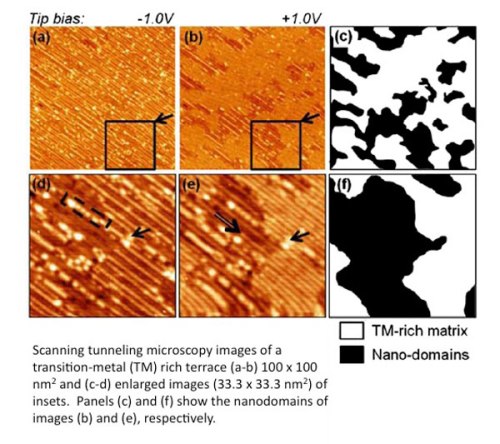A team of international scientists led by Pat Thiel from the Ames Laboratory of the U.S. Department of Energy has revealed a new kind of structural irregularity or defect that can be found in quasicrystals, which are materials that have crystal-like properties but with a more intricate structure.
 Scanning tunneling microscopy images of transition-metal quasicrystals' surface and nanodomains. (credit: Ames Laboratory -- USDOE)
Scanning tunneling microscopy images of transition-metal quasicrystals' surface and nanodomains. (credit: Ames Laboratory -- USDOE)
The international team comprises researchers from the Institut Jean Lamour at Nancy-Université based in France. In crystals, the presence of defects, control or manipulate important material properties such as corrosivity, color, conductivity, mechanical strength, chemical purity or surface properties. All defects are not bad although the term ‘defect’ suggests an unwanted quality.
Phason flip is an already known defect type that can appear at the surface of quasicrystals. The research team discovered a new defect type when it observed strange nano-sized areas on the surfaces of quasicrystals. Contrary to the phason flip, this defect type expands outside the surface region as well as into the quasicrystal.
This unique nanodomain defect does not exist always but appears only under certain situations in order to balance competing energetic issues. Its formation at those circumstances allows the exposure of higher-energy transition-metal-rich surf instead of lower-energy aluminum-rich surfaces.
Since nanostructures are promising materials in a broad array of applications ranging from electronics to medical, understanding the connection between bulk and surface defects in materials will be helpful in knowing the reason behind the unusual strength of nanostructures.
Thiel explained that it is already known that the strength of nanowires is associated with the fact that the surface can eliminate the bulk defects. However, nanowires can eventually fail under extreme circumstances where again the surface seems to play its part, thus it is highly significant to understand the connection between surface and bulk defects, Thiel concluded.